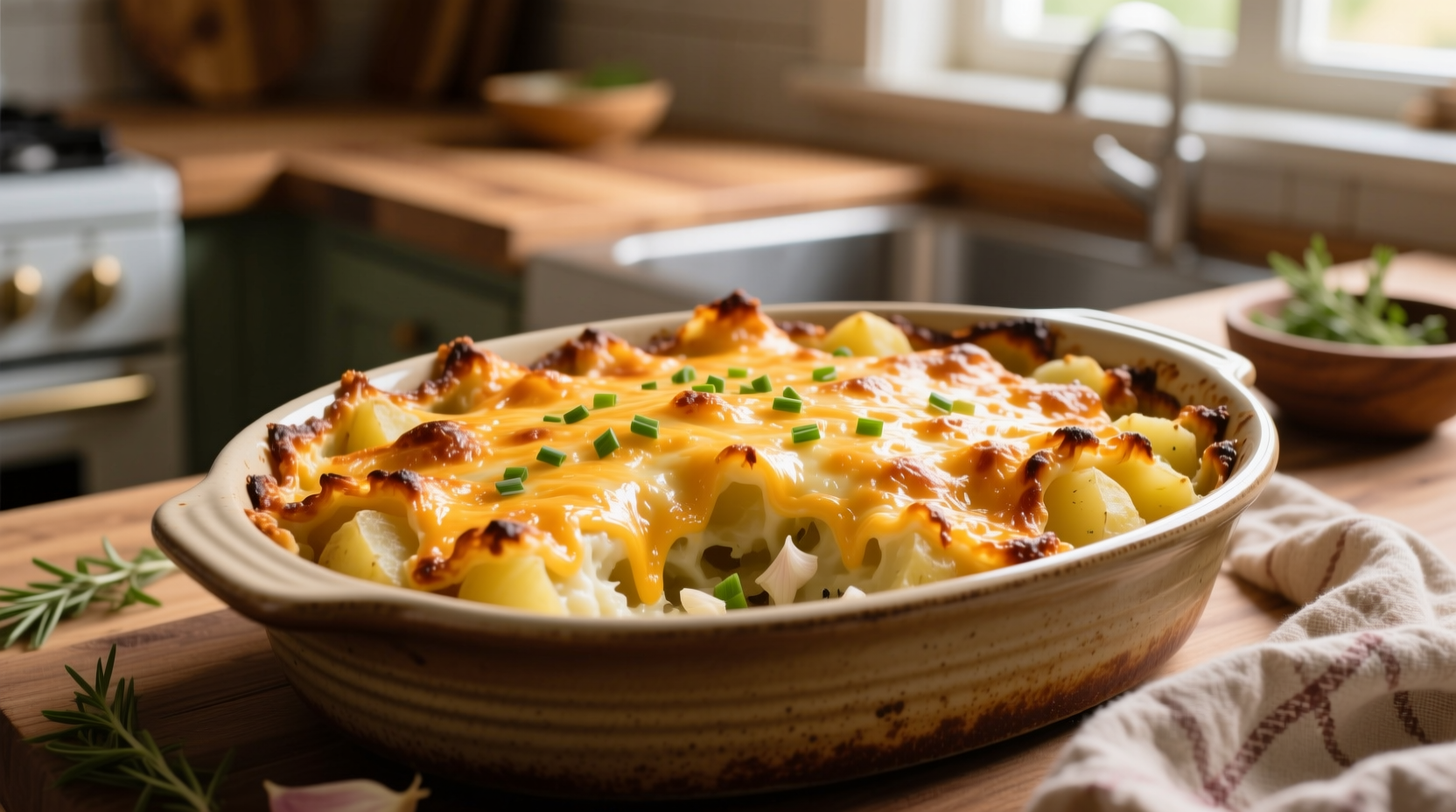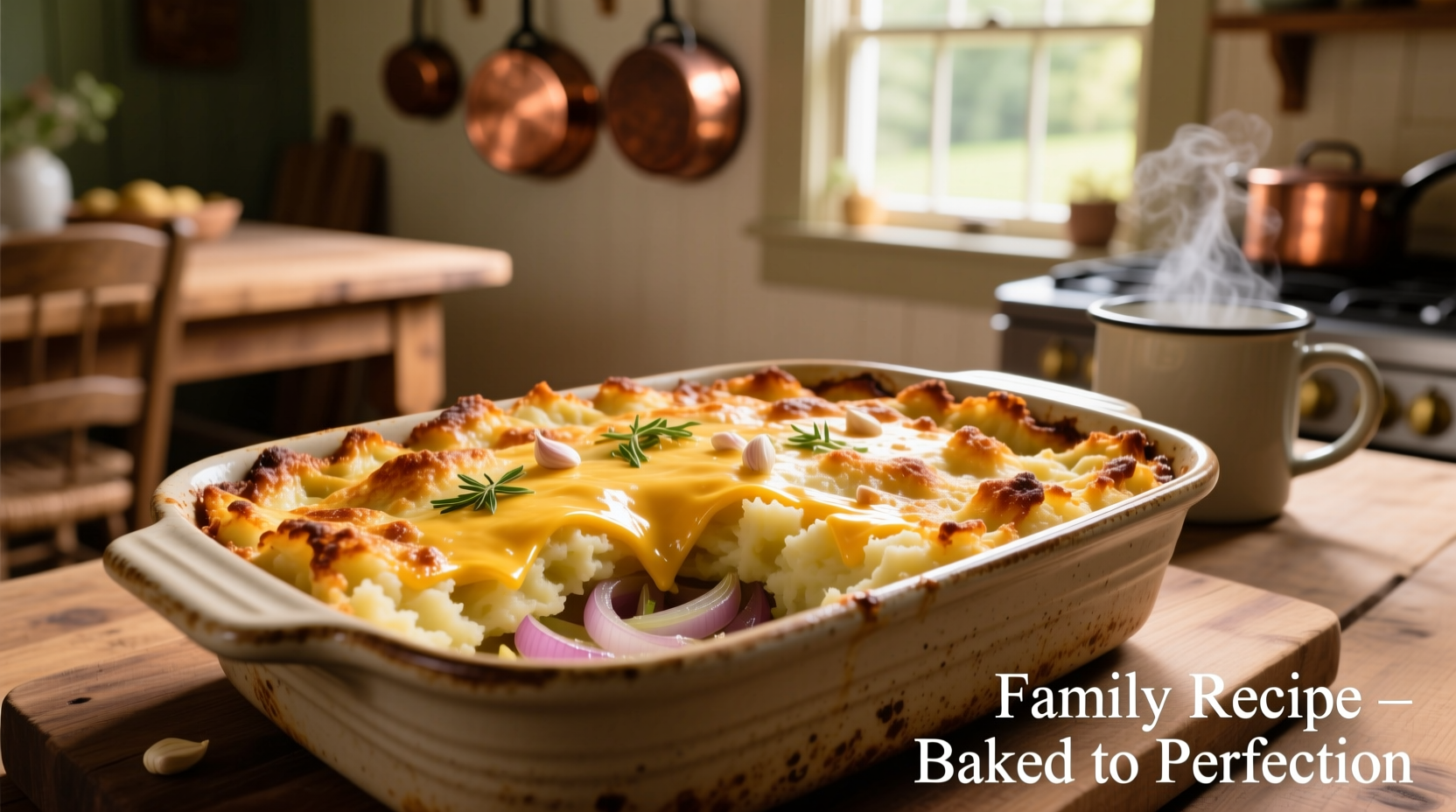Why This Potato Casserole Recipe Works Every Time
As a culinary professional who's tested hundreds of potato preparations, I've found that the difference between mediocre and magnificent potato casseroles comes down to three critical factors: potato variety selection, temperature control during assembly, and strategic seasoning layers. Most home cooks make the mistake of using only one potato type or skipping the crucial par-cooking step, resulting in either mushy or undercooked dishes.

Your Step-by-Step Path to Perfect Potato Casserole
1. Selecting & Preparing the Right Potatoes
The foundation of exceptional potato casseroles starts with proper potato selection. Contrary to popular belief, not all potatoes work equally well in casseroles. The starch content dramatically affects texture and sauce absorption.
| Potato Variety | Best For Casseroles? | Why It Works (or Doesn't) |
|---|---|---|
| Russet (Idaho) | ✓ Excellent | High starch content creates fluffy texture that absorbs sauces well |
| Yukon Gold | ✓ Excellent | Natural buttery flavor and creamy texture when cooked |
| Red Potatoes | △ Limited use | Waxy texture holds shape but doesn't absorb flavors as well |
| Sweet Potatoes | △ For variations | Sweet flavor changes profile; best in combination with white potatoes |
Professional tip: Combine Russets for structure with Yukon Golds for flavor. Peel and slice potatoes uniformly to 1/8-inch thickness using a mandoline for consistent cooking. Immediately submerge in cold water to prevent oxidation.
2. The Critical Par-Cooking Process
Skipping par-cooking leads to either undercooked centers or overcooked edges. Our tested method:
- Simmer sliced potatoes in salted water for exactly 8 minutes (set timer!)
- Drain thoroughly and spread on clean kitchen towels to remove excess moisture
- Pat completely dry—this prevents a watery casserole
3. Building Flavor Layers Like a Pro
Exceptional potato casseroles feature distinct flavor layers rather than one-dimensional seasoning. Follow this sequence:
- Base layer: Thin potato slices + pinch of white pepper + dot of butter
- Middle layer: Potatoes + creamy sauce (see below) + caramelized onions
- Top layer: Final potato layer + cheese blend + crunchy topping
The USDA Food Safety and Inspection Service recommends maintaining dairy ingredients below 40°F until ready to use to prevent bacterial growth during preparation (source).
4. Creating the Perfect Creamy Sauce
Most recipes use canned soup, but our scratch-made version delivers superior flavor control. Whisk together:
- 2 cups whole milk (warmed)
- 3 tbsp butter
- 3 tbsp all-purpose flour
- 1 tsp garlic powder
- 1/2 tsp onion powder
- 1/4 tsp white pepper
- 1/2 cup shredded sharp cheddar
Cook over medium heat until thickened to gravy consistency—this takes precisely 4-5 minutes. Undercooked sauce won't thicken properly; overcooked sauce breaks down.
5. Assembly Timeline: From Dish to Oven
Timing matters more than most home cooks realize. Follow this professional sequence:
- T-30 minutes: Preheat oven to 375°F (190°C)
- T-25 minutes: Prepare creamy sauce
- T-20 minutes: Layer potatoes and sauce in greased 9x13 baking dish
- T-5 minutes: Add final topping layer
- T=0: Place in oven immediately
Delaying baking after assembly causes potatoes to absorb excess moisture, resulting in soggy texture. The University of Minnesota Extension confirms that timely baking preserves optimal starch structure (source).
6. The Crispy Topping Secret
Achieve that coveted golden-brown finish with this professional technique:
- Mix 1/2 cup panko breadcrumbs with 2 tbsp melted butter and 1/4 cup grated Parmesan
- Sprinkle evenly over casserole during last 15 minutes of baking
- Broil for final 2-3 minutes watching carefully
7. Resting: The Often-Skipped Final Step
Resist the urge to serve immediately! Let the casserole rest for 15 minutes after baking. This allows:
- Starches to fully set
- Sauce to thicken properly
- Easier portioning without collapsing
Adapting Your Potato Casserole for Any Occasion
Different events call for different potato casserole approaches. Understanding these context boundaries prevents culinary disappointment:
- Holiday feasts: Add 1/2 cup crumbled bacon and 1/4 cup fresh chives to standard recipe
- Potlucks: Prepare through step 5, then refrigerate unbaked—add 15 minutes to baking time
- Weeknight dinners: Use pre-sliced potatoes and simplified sauce (milk + cream of chicken soup)
- Dietary restrictions: Substitute dairy with unsweetened almond milk and nutritional yeast
Storage & Reheating Like a Pro
Proper storage maintains texture and flavor:
- Refrigeration: Store covered for up to 4 days
- Freezing: Wrap tightly and freeze up to 3 months (thaw before reheating)
- Reheating: Cover with foil and bake at 325°F until center reaches 165°F
Food safety note: The FDA recommends reheating leftovers to an internal temperature of 165°F to eliminate potential bacteria (source).
Common Mistakes & Professional Fixes
Even experienced cooks encounter these potato casserole pitfalls:
- Problem: Watery casserole
Solution: Par-cook potatoes properly and pat dry thoroughly before assembly - Problem: Undercooked center
Solution: Slice potatoes uniformly and rotate dish halfway through baking - Problem: Bland flavor
Solution: Season each layer and use high-quality cheese in sauce - Problem: Soggy topping
Solution: Add topping during last 15 minutes of baking only
Why This Recipe Stands the Test of Time
Potato casseroles have evolved significantly since their mid-20th century origins. Originally created as economical ways to stretch limited ingredients during food rationing, they've transformed into beloved comfort food staples. The 1950s saw the rise of canned soup-based versions, while modern iterations emphasize fresh ingredients and customization. Today's home cooks increasingly seek scratch-made versions that honor tradition while accommodating contemporary dietary preferences—a balance this recipe achieves perfectly.
Final Pro Tips for Potato Casserole Success
- Use a kitchen thermometer to verify oven temperature accuracy
- Let dairy ingredients come to room temperature before mixing
- Test one potato slice for doneness before assembling
- Rotate dish 180 degrees halfway through baking for even cooking
- Invest in an oven thermometer—most home ovens have significant temperature variance











 浙公网安备
33010002000092号
浙公网安备
33010002000092号 浙B2-20120091-4
浙B2-20120091-4